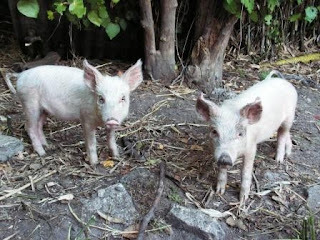
By LIZ WILLIS - North Shore Times Tuesday, 08 April 2008
BEN WATSON/North Shore Times
GOOD LIFE: Growing enough veggies for salads saves money and the planet, says Beth Hansen.
The secrets behind a Devonport plot to foil the looming oil crisis are about to be revealed. It’s a down-to-earth approach rooted in Beth Hansen’s strong belief that even the smallest backyard can be home to a beautiful organic veggie garden.
At 63 after a lifetime of gardening she says it’s time to share her knowledge. She’s warning that vegetable prices will skyrocket as fuel prices rise. It wouldn’t surprise her if lettuces sold for $6 by Christmas.
"I don’t want to panic people but we need to start growing our own produce."
Ms Hansen’s garden is testament to just what can be grown in a small space. In her average-sized front garden she grows basil, parsley, lettuce, rocket, carrots, onions, kumara, spinach, capsicum and bok choy.
"You don’t need a lot of room. This is one thing I want to teach people." If you prepare the soil correctly you can plant intensively which also keeps the weeds down, she says.
As a watercolour artist she’s conscious of colour and veggies and flowers grow happily alongside each other in her cottage garden.She’s now devoting more time to giving organic vegetable growing lessons than painting watercolours.
"It’s all very well painting nice pictures but if I can inspire half a dozen people to start growing their own veggies I would be thrilled."
The old-fashioned art of veggie gardening has waned as people move to smaller properties, she says. Children aren’t taught to grow plants so vegetable gardens have started to disappear. But Ms Hansen says you can grow a lot in a small area, saving money.
Her recipe for a good veggie garden includes:
- Planting veggies in raised beds near the kitchen
- Getting family involved
- Using a mix of organic soil, water crystals and crushed metal aggregate
- Running the mower over dried seaweed then spreading it on the garden
- Having an automatic watering system






















